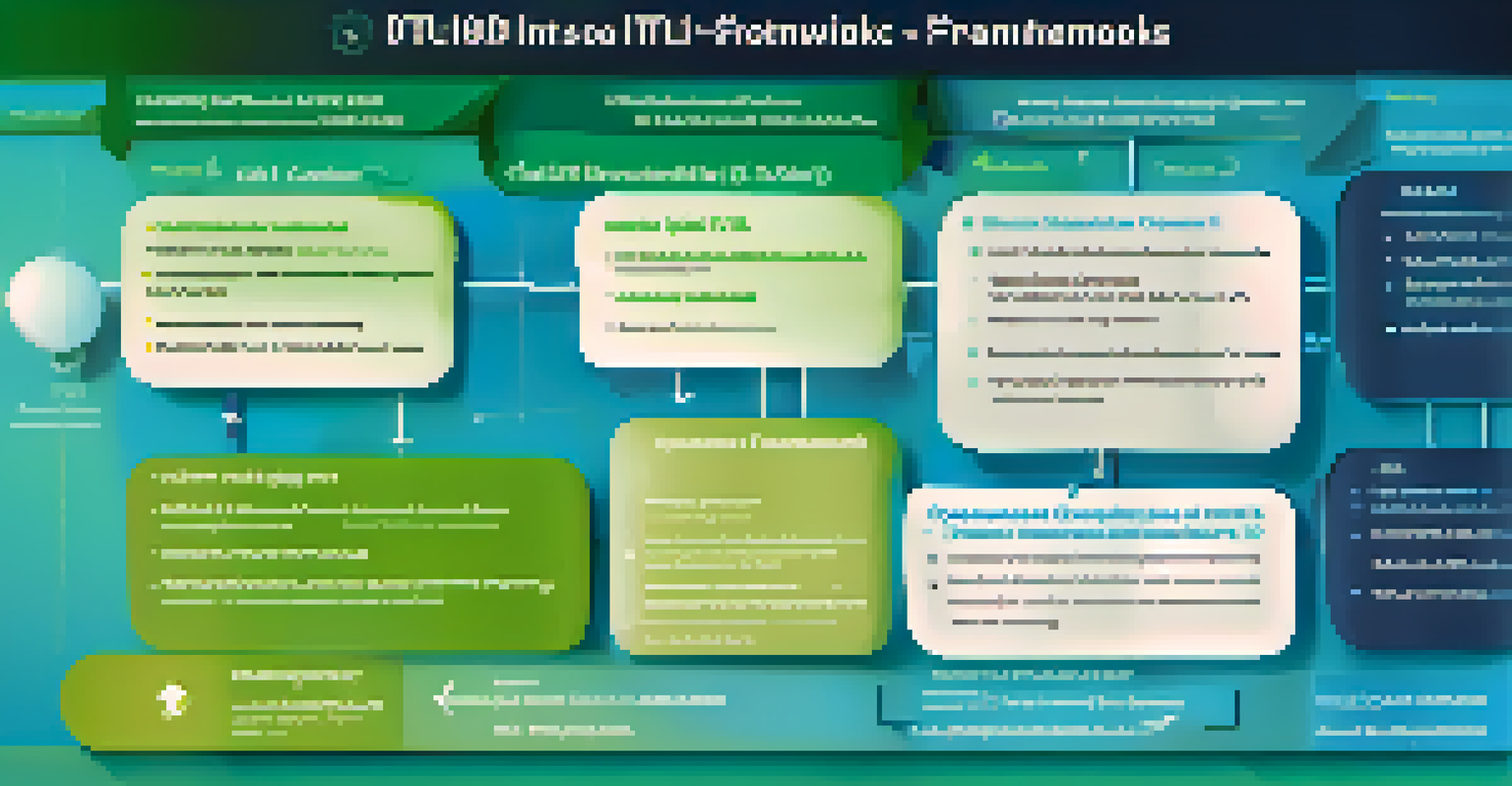Implementing ITSM: Steps for Successful Adoption in Business

Understanding ITSM: What You Need to Know
IT Service Management (ITSM) refers to the way IT teams manage and deliver services to meet business needs. It's like having a well-oiled machine that not only runs smoothly but also adapts to changes in the environment. By focusing on processes and workflows, ITSM helps organizations improve efficiency and service quality.
Good management consists in showing average people how to do the work of superior people.
In essence, ITSM encompasses various frameworks and best practices that guide teams in delivering high-quality IT services. It's important to recognize that ITSM isn't just about technology; it's also about aligning IT with business goals. This alignment ensures that IT delivers value and supports the overall mission of the organization.
Before diving into implementation, it's crucial to grasp the core principles of ITSM. This foundational knowledge will provide you with a roadmap for successful adoption, allowing you to navigate challenges and leverage opportunities effectively.
Assessing Your Current IT Environment
The first step in implementing ITSM is to evaluate your current IT environment. This assessment acts like a health check-up, revealing strengths and weaknesses in existing processes. By understanding where you stand, you can identify gaps that ITSM can help fill.

Engaging with stakeholders during this assessment is vital. Gathering input from team members will provide insights into everyday challenges and inefficiencies they face. This collaborative approach ensures that the ITSM implementation addresses the real needs of your organization.
ITSM Aligns IT with Business Goals
By focusing on processes and workflows, ITSM ensures that IT services deliver real value and support organizational missions.
Once you have a clear picture of your current state, you can set specific goals for your ITSM adoption. These goals should align with your business objectives and provide a benchmark to measure progress as you move forward.
Defining Clear ITSM Objectives and Goals
Setting clear objectives and goals for ITSM implementation is essential. Think of it as creating a map for a journey; having defined destinations will guide your efforts and keep you on track. Objectives should be measurable, achievable, and time-bound to ensure clarity.
The only way to do great work is to love what you do.
Consider what you hope to achieve with ITSM. Common goals might include improving service quality, reducing operational costs, or enhancing customer satisfaction. By articulating these goals, you can prioritize initiatives and allocate resources effectively.
Regularly revisiting and refining your ITSM objectives will keep your team focused on what truly matters. This iterative approach not only fosters accountability but also allows for adjustments based on feedback and changing business needs.
Choosing the Right ITSM Framework
Selecting the appropriate ITSM framework is like picking the right tool for a job. There are several frameworks available, including ITIL, COBIT, and ISO 20000, each offering unique benefits. Understanding the differences among them will help you choose one that aligns with your organization’s goals and culture.
For instance, ITIL (Information Technology Infrastructure Library) is widely recognized for its comprehensive approach to service management. It provides best practices that can significantly enhance service delivery and support continuous improvement. On the other hand, COBIT focuses more on governance and management of enterprise IT.
Engage Stakeholders for Success
Involving key players early in the ITSM implementation fosters ownership and ensures alignment with organizational objectives.
Ultimately, your choice of framework should resonate with your team and its processes. Ensure that the framework you select is adaptable, as it will need to evolve with your organization over time.
Engaging Stakeholders for Successful Buy-In
Engaging stakeholders is crucial for successful ITSM adoption. Think of your organization as a ship; without the crew’s commitment, it won’t sail smoothly. By involving key players early in the process, you can foster a sense of ownership and ensure that everyone is on the same page.
Start by communicating the benefits of ITSM and how it aligns with your organization's objectives. This transparency builds trust and encourages active participation. Regular updates and open forums for discussion will also help maintain momentum and engagement throughout the implementation process.
Remember, change can be challenging, so addressing concerns and fostering a collaborative atmosphere will make the transition smoother. By valuing input from all stakeholders, you create a culture of collaboration that paves the way for success.
Developing a Comprehensive ITSM Implementation Plan
Once you have a clear understanding of your goals and have engaged stakeholders, it's time to develop a comprehensive ITSM implementation plan. This plan serves as your roadmap, outlining the specific steps, timelines, and resources required for successful adoption. It’s essential to break down the implementation into manageable phases to avoid overwhelming your team.
Each phase should include specific objectives, key performance indicators (KPIs), and milestones to track progress. Establishing a timeline helps prioritize tasks and ensures accountability among team members. Additionally, identifying potential risks and mitigation strategies will prepare your organization for any bumps along the way.
Continuous Improvement is Key
Establishing KPIs and fostering a culture of adaptability enables organizations to measure success and refine ITSM practices over time.
A well-structured implementation plan not only guides the team but also provides clarity to stakeholders about what to expect. Regularly reviewing and adapting this plan will keep the project aligned with your organization's evolving needs.
Training and Supporting Your ITSM Team
Training is a critical component of successful ITSM implementation. Just as a new tool requires instruction for optimal use, your team needs the right training to navigate the ITSM framework effectively. Investing in training programs ensures that your team understands not only the processes but also the reasoning behind them.
Consider a mix of formal training, workshops, and on-the-job mentoring to cater to different learning styles. This approach fosters a deeper understanding and builds confidence among team members. Additionally, providing ongoing support and resources will keep the momentum going as they apply their new skills.

Remember, creating a culture of continuous learning is vital. Encouraging your team to share their experiences and insights will foster collaboration and innovation as you adapt and refine your ITSM practices over time.
Measuring Success and Continuous Improvement
After implementing ITSM, measuring success becomes crucial. Establishing KPIs and metrics allows you to track progress against your predefined goals. Think of this as a fitness journey; you wouldn’t know if you’re making progress without tracking your workouts and nutrition.
Regularly review your performance data to identify areas of success and those needing improvement. Engaging stakeholders in these evaluations fosters a sense of shared responsibility and continuous collaboration. Gathering feedback will also provide insights into areas where adjustments may be necessary.
Finally, embrace a culture of continuous improvement. ITSM is not a one-time effort but an ongoing journey. By fostering a mindset of innovation and adaptability, your organization can ensure that ITSM evolves alongside your business needs and continues to deliver value.